Honda Civic Vs Kia Forte Comparison: Compact Sedan Face-Off


Traditional cars aren’t dead—and for some, they remain the best new car choice.
In the Honda Civic and Kia Forte, we have two excellent examples of the breed. Both are affordable, not just to buy, but to run, sipping fuel at a rate that no SUV could hope for without battery assistance. They’re spacious, well-equipped, and easy-peasy to park, too.
The Civic has impressed us so much in the last 12 months, we crowned it our 2022 Car of the Year. Kia hasn’t sat idle either, treating its bread-and-butter Forte sedan to a comprehensive round of updates for this model year. Managing editor Mike Schlee and I spent a week with both to see if that’s enough to topple the current compact king.
Get a Quote on a New Honda Civic or Kia ForteInterior and Cargo Space

Civic: The Civic already looks like the wider car outside, and slotting into the front seats only confirms that. The low-profile dashboard design emphasizes the cabin width, with a cool mesh strip hiding the air vents. Honda has mercifully kept the piano black off the center console too, with a classy pinstripe design that looks clean for longer than 0.2 seconds.The knurled metal rotary knobs for the climate controls are classy as heck, rotating with a satisfying click. Material quality is uniformly good—impressive, as eagle-eyed readers will note this is the same press unit we drove way back last summer.

This might be a (very refined) economy car, but the Civic’s super-low front seat mounting should shame some sports cars. While it makes ingress and egress difficult for older folks, the seat cushion is comfortable, and the placement makes for more headroom. Lateral support is good without being too snug. Top-trim Touring models like this benefit from a power-operated passenger seat, as well. Sightlines are generally good.

Rear seat space is substantial, with 37.4 inches (950 millimeters) of legroom and a headroom figure only slightly short of that. What’s more, Honda’s designers have lowered the window line, so rear-seat passengers can enjoy more natural light.

Pop the trunk and the Civic greets you with 14.4 cubic feet (408 liters) of storage space. The opening is nice and wide too, and there’s a reasonably low lip height to clear.

Forte: The Kia’s interior design is a little busier. The two round air vents on either side of the dashboard add a dash of sportiness to the cabin. The dashboard itself is a chunkier design than the slimline Honda, however, and there’s more plain black plastic for passengers to stare at. Like the Civic, the Forte is very user-friendly, with straightforward climate controls and a clear center stack design.

From the front seat, the Forte feels like a crossover compared to the Civic. The seats are mounted high, which might make getting in easier, but severely impacts available headroom. I’m not even particularly tall, and my hair was brushing the headliner. That being said, the seats themselves look and feel great, with very good thigh and lower back support. Sorry, it’s manual passenger seat adjustments here.

Echoing the front seats, the Forte’s rear row looks good, but space is at more of a premium than it is in the Honda. 35.7 inches (907 mm) of legroom should be good for all but the tallest folks, on all but the longest of drives, but it’s still over an inch and a half shorter. Headroom is actually better than in the Civic, however, 37.5 beating 37.1 inches (953 and 942 mm, respectively). The Kia has slightly more hip room but slightly less shoulder room, while its smaller window surface area contributes to the feel tighter rear quarters.

Surprisingly, the Kia is the trunk space leader, with a huge 15.3 cubic feet of storage (433 L). Like the Civic, it has a 60/40 folding rear row.
SEE ALSO: Honda Civic vs Mazda3 ComparisonBottom Line: The Civic scores a decisive first point here. Its interior is both nicer and more spacious.
Tech and Features
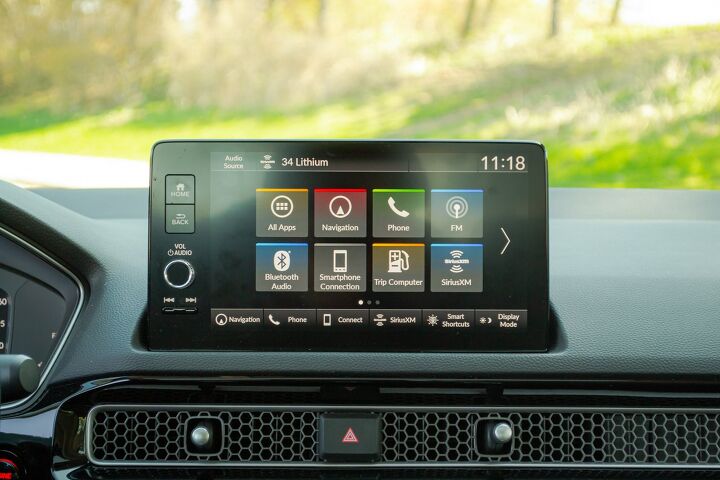
Civic: This top Touring trim drops a 9.0-inch version of Honda’s touchscreen atop the dashboard. It’s pretty standard infotainment fare, with good (color-coded icons) and bad (tardy response times) aspects. This one does unlock wireless Apple CarPlay and Android Auto, which pairs nicely with the large, flat wireless charger deep in the center console. Other than one 15-minute period of Spotify cutting in and out, it worked flawlessly for me during the week.
Other tech features include an upgraded 12-speaker Bose sound system, a pair of rear-seat USB ports, and HD radio.
Honda’s safety suite is comprehensive. The Civic includes the usual automated emergency braking, plus lane departure warning, road departure mitigation, tire pressure monitoring, blind-spot monitoring, rear-cross traffic alert, and road sign recognition. Auto high beams and a rear-seat reminder are part of the party, too. There’s also a full-range adaptive cruise control system, though I found it wasn’t as natural in its operation as that of the Kia.

Forte: The GT-Line is blessed with a 10.25-inch touchscreen. Not only is it larger, the Forte’s touchscreen is quicker in its responses. The designer in me loves the consistent pinky-purple color scheme, but the uniform look makes it harder to operate via peripheral vision. The house font’s legibility leaves something to be desired, as well. In a move that confounds us, Kia still only offers wireless Apple CarPlay and Android Auto on the lowest trims and their 8.0-inch screens, but the bigger unit still requires a leash.
The Kia’s seven-speaker Harman Kardon sound system can’t kick out the jams like the Honda’s Bose setup. It also misses out on a few other creature comforts, like the afore-mentioned manual front passenger seat. Kia at least matches Honda on the wireless charging pad, which isn’t quite as large, but isn’t locked to the trop trim only.
Kia’s own lineup of driver assists mirrors its competitor, including lane keep and follow assists, forward collision avoidance, rear cross-traffic alert, blind-spot monitoring, and a tire pressure monitoring system. It also adds in a driver attention alert system. We preferred its clearer backup camera, and Kia’s Highway Drive Assist, which flows more naturally with traffic.
SEE ALSO: 2022 Hyundai Elantra N First Drive Review: Big Grin MachineBottom Line: This is a closer call. The Forte has the larger, more responsive screen, but the Civic’s wireless phone mirroring is handy. The Honda has the better sound system, too. Both cars include a wide range of standard safety kit, but the Kia nosed ahead on that front. That’s enough to earn it the win in this category.
Powertrain, Driving Feel, and Fuel Economy

Civic: Up-level trims like this Civic Touring benefit from Honda’s strong 1.5-liter turbocharged engine. Rated at 180 horsepower, the more important figure is a stout 177 pound-feet, available from 1,700 rpm all the way through 4,500 rpm. That thick swell of torque allows the Civic to easily keep pace with traffic and merge onto highways. Both cars may wield continuously-variable transmissions, but the Civic’s is smoother in operation, again due to all that torque. It isn’t quite as excellent as the Toyota Corolla, which benefits from a physical first gear, but Honda has ironed out a lot of the rubberband feel that plagued earlier iterations.
While we haven’t experienced the base 2.0-liter in the current Civic yet, I drove it in the 2020 Civic coupe. On that experience alone, I believe even that would have the edge over the Forte’s drivetrain.

Honda continues to strike an appealing balance between handling and comfort with the Civic. The Touring rides with a slight firmness, but keeps all body motions in check. There’s an extra layer of refinement now too, with larger bumps emitting only a muffled thud inside. The steering is light and accurate, In outright enjoyment terms, it isn’t quite as fun to wheel around as the Mazda3. But it isn’t far off, either, scoring a decisive silver in the class.
Even with the extra power, the Honda wins the fuel economy race, too. Honda quotes fuel economy figures of 31 mpg city, 38 mpg highway, and a combined 34 mpg. Canadian figures are 7.6, 6.1, and 6.9 L/100 km, respectively.

Forte: Like the Civic, Kia offers the Forte with two engine options, both sending their power to the front wheels. One turbocharged, one naturally aspirated. You need to graduate to the Civic Si competitor, the Forte GT, to access the former, however. Everything else, including this GT-Line model, makes do with Kia’s 2.0-liter engine, pumping just 147 hp and 132 lb-ft of torque through a CVT. (Select models still offer a manual transmission in Canada.)
First, the good news: thanks to smart CVT tuning and an aggressively mapped right pedal, the Forte makes the most of those middling figures. It never is, or even feels, as quick as the Civic, but in everyday driving, only highway on-ramps feel a little short. There the CVT will do its high-rpm drone thing for a few seconds.

Unfortunately, the lack of power doesn’t translate to appreciably better fuel economy. The EPA scores the Forte at 29 mpg city and 39 mpg highway, for a combined 33 mpg rating. (Canadian figures are 7.9, 5.9, and 7.0 L/100 km, respectively.) In our week of testing, it averaged slightly worse figures than the Civic as well.
While the Kia’s crimson accoutrements might suggest a more engaging drive, the truth is it’s the cruiser of this duo. The smaller wheels and softer suspension give the Forte a more laidback vibe, which never devolves into sloppiness. The flat-bottomed steering wheel is similarly light on feedback, but tracks true. The Kia feels happier at a steady speed on the highway than it does snaking across a backcountry road.
Bottom Line: There’s no way around it: the Civic’s turbocharged mill is the better choice here. More powerful but also more economical, the Honda makes short work of on-ramps where the Kia can sometimes struggle. That low-end torque means less drone from the CVT, too. Both of us like the Civic’s ride and handling balance, as well.
Styling

Civic: Mike calls the Civic “sophisticated conservative,” and I’d agree that about sums it up. A year of this look has given us time to evaluate it on its own merits, not just in comparison to the dramatic previous-gen car. The Civic is a good, simple design, with minimal fuss. I’m happy that it once again looks like a sedan, too, instead of automakers making the rear decks shorter and shorter. Those pretty 18-inch wheels can’t save this white example from looking a little too rental car, however.

Forte: In comparison, Schlee dubs the Forte “modern flashy.” Those blingy front headlights, with their dashed-line DRL signatures, give the Kia a much more expressive face. The GT-Line trim dips some exterior trim pieces in red for an added dash of character, though that might be misconstrued as try-hard by some. The spindly 17-inch wheels look good, but we’d hate to have to clean them on the regular.

Bottom Line: You know what we’re going to say by now: styling is subjective. The boss summed these two up best, so go with the one that appeals to you.
SEE ALSO: 2020 Nissan Sentra Review: Big Car Feel, Small Car PricePricing and Value

Civic: Honda updated pricing for 2022 Civic models in early May. The Civic’s lowest MSRP is $23,645 ($27,150 CAD), including mandatory destination charges. That includes the nat-asp 2.0-liter engine, 16-inch steel wheels with covers, LED headlights, cloth interior, and a four-speaker sound system. The Honda Sensing suite of driver assists is also standard.
When we first tested his top-shelf Touring trim last year, it ran $29,910 ($32,265 CAD), with the only option being the Platinum White Pearl paint ($395 / $300 CAD). Speccing the same car today results in $30,640 ($34,050 CAD).

Forte: As equipped, this Forte GT-Line rings in at $25,045 ($28,745 CAD). The premium blue paint is an option in Canada, but not compatible with the GT-Line south of the border.
Heading for base camp? The entry point into Forte ownership in the US is with the Forte FE, at just $20,145. That nets buyers 16-inch wheels, wireless phone mirroring, and an 8.0-inch touchscreen. You won’t find many driver assists, however. In Canada, the LX manual transmission model anchors the lineup at a bargain-basement $19,995 CAD.
SEE ALSO: Honda Civic vs Hyundai Elantra ComparisonBottom Line: Across the board, this is the Kia’s category. It’s thousands less than the Civic, either as-tested or in their respective base models. That being said, Kia sacrifices a lot of standard kit to get the Forte down to such levels, especially driver assists.
That being said, as we have them here, the Forte offers more bang for your buck.
Verdict: Honda Civic vs Kia Forte Comparison

The 2022 Kia Forte tried so hard. And got so far. But in the end … it still mattered. The refreshed Kia has a sharp, baby-Stinger look and is easy on the wallet, especially stacked up against the now-pricey Civic. It’s a good choice for budget-friendly buyers.
But the Civic is still king. The Honda is more spacious, more economical, and better to drive. The Civic isn’t far off the next size up, and the interior redesign is a class act. So long as you can swing those higher monthly payments, it’s the one we’d recommend in this match-up.
Become an AutoGuide insider. Get the latest from the automotive world first by subscribing to our newsletter here.

Kyle began his automotive obsession before he even started school, courtesy of a remote control Porsche and various LEGO sets. He later studied advertising and graphic design at Humber College, which led him to writing about cars (both real and digital). He is now a proud member of the Automobile Journalists Association of Canada (AJAC), where he was the Journalist of the Year runner-up for 2021.
More by Kyle Patrick













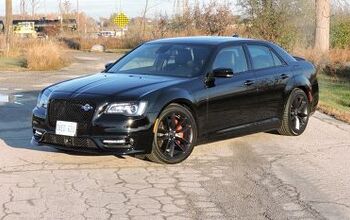





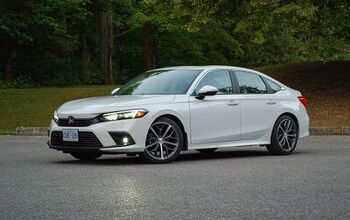


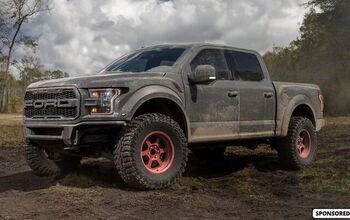



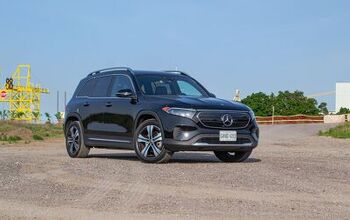




Comments
Join the conversation
I Drive Kia Forte GT line 2023 that I buy in December of last year and l loved it the body style of every angle so sporty and the interior so nice touch it detail Quality driving super comfy very smooth ride feel sporty the safety of the forte is incredible and fuel efficient is awesome I take my forte to a trip to Scottsdale Arizona from Houston and was super economic and very impressed how smooth ride and at the same time very sporty and fun to drive for the price I pay is a excellent choice you can be wrong with the warranty 100,000 miles or 10year I recommend to people that looking to buying a car that go and trying other brands test drive them in my personal preference dont like Honda I think they are overpriced and overrated and Toyota too and the reason I said it is because all brands have the same maintenance schedule to bring get to the dealership but Honda and Toyota think they are special and the customer dont realize just look the warranty 36,000 or 3 years and then happened the customer has to pay out of the package in my opinion 36,000 miles is nothing for a new car this just my opinion only
Why not compare the $29,000 civic touring to the $27,000 Forte GT? With the sport suspension, 18" wheels, 200hp 1.6 turbo, and the 7 speed dct I think the forte is a much better proposition. Especially when you figure in the warranty.